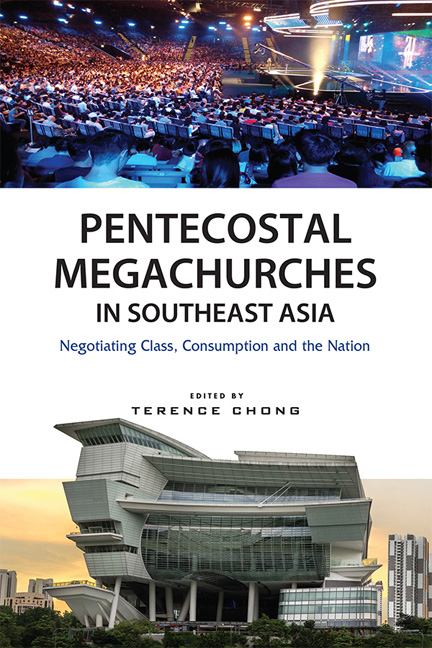4 - Reaching the City of Kuala Lumpur and Beyond: Being a Pentecostal Megachurch in Malaysia
from Malaysia
Published online by Cambridge University Press: 04 July 2018
Summary
Introduction
Said to have originated in the United States in the 1900s, Pentecostalism is one of the fastest growing Christian denominations internationally and has become the largest numerical force in world Christianity after the Roman Catholic Church. Pentecostalism has traditionally seen a downward mobilization of the Spirit resulting in large swathes of working or rural class individuals embracing the faith. Although these characteristics are now found globally, the amorphous nature of Pentecostalism defies typical characterizations because of its simultaneously transnationalizing and indigenizing features. Its growth, expressions, manifestations, and enactments deserve to be treated not merely as an import from American Christianity, but one that has varied, multiple, and fluid meanings, especially in a non-Western, Muslim majority country like Malaysia. Whereas Pentecostal churches are to some extent governed and characterized by established denominational structures and theology, many megachurches are increasingly non-denominational and construct their own brand and identity that is increasingly influenced by corporate discourse and governed by growth philosophy. In fact, this is one of the distinguishing characteristics of a megachurch: pastors deliberately execute projects to increase attendance numbers, while strategizing to grow the church even bigger in size and financial resources. This creates competitive, organizational, and theological tensions. It is important to decipher the extent to which this is embraced and resisted.
Using Calvary Church, a Pentecostal megachurch based in Kuala Lumpur, as a case study, I demonstrate how the church is able to strategically draw upon various discourses, embedded in discursive practices and mediated by organizational, linguistic, and socio-cultural resources to materialize Christianity in the Malaysian context and achieve its organizational objective of growth. Given Malaysia's volatile and complicated multi-ethnic and multi-religious landscape, this chapter explores how Calvary Church uses elements of religious traditions and other familiar and appealing discourses to produce artefacts and experiences that resonate with contemporary middleclass ideals in Malaysia. I demonstrate this specifically by studying the church's practices as well as the multiple discourses the church draws upon, which can be observed from organizational artefacts. The focus of the chapter and the milieu of the analysis will be the organizational structure of the church. Although reference will be made to the Malaysian context where appropriate, it will not be the central scope of this chapter; there is extensive literature about Malaysia's religious context.
- Type
- Chapter
- Information
- Pentecostal Megachurches in Southeast AsiaNegotiating Class, Consumption and the Nation, pp. 71 - 99Publisher: ISEAS–Yusof Ishak InstitutePrint publication year: 2018

